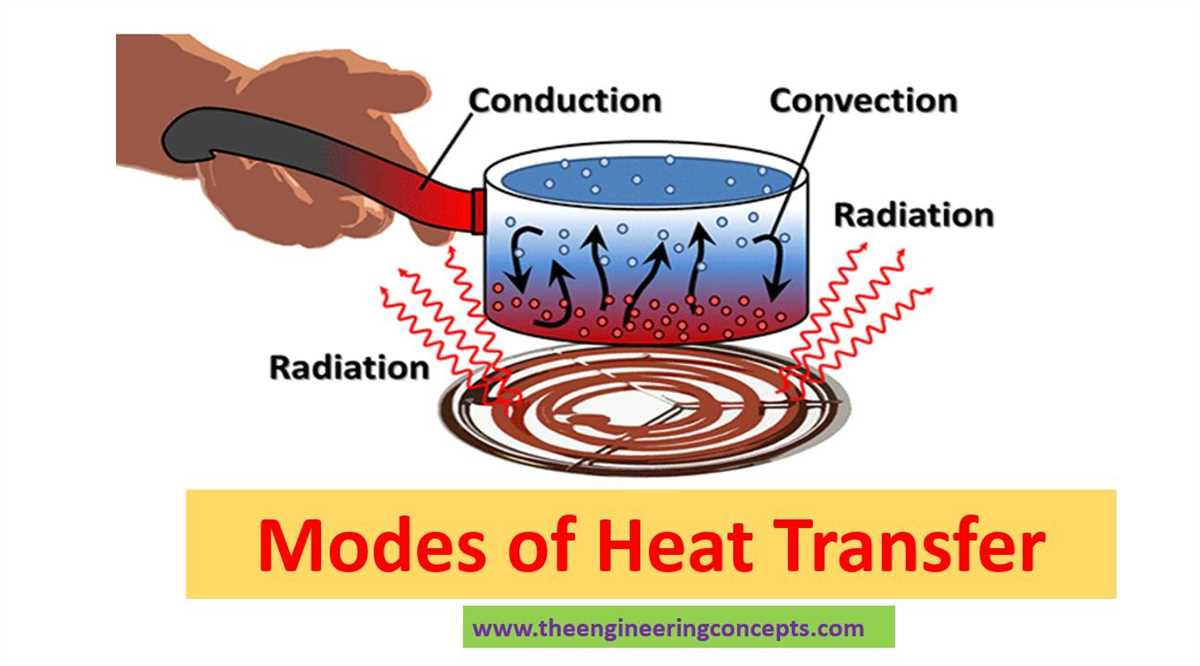
In the field of thermodynamics and heat transfer, conduction refers to the process of heat transfer through a solid or a stationary fluid, where energy is passed through molecular collisions from one particle to another. It is one of the three main mechanisms of heat transfer, along with convection and radiation.
Understanding the principles of conduction is crucial in various engineering disciplines, such as mechanical, civil, and chemical engineering. This article provides an answer key for questions related to heat transfer by conduction, helping students and professionals alike to grasp the key concepts and principles.
The answer key includes explanations for questions on topics such as Fourier’s law of heat conduction, thermal conductivity, temperature gradients, and heat transfer rates. It also offers examples and calculations to demonstrate how these concepts are applied in real-world scenarios.
By studying this answer key, readers will gain a comprehensive understanding of heat transfer by conduction, allowing them to apply this knowledge to solve complex problems and design efficient heat transfer systems. Whether you are a student preparing for an exam or a professional looking to enhance your understanding of conduction, this answer key will serve as a valuable resource.
Understanding Heat Transfer by Conduction
Heat transfer by conduction is a fundamental concept in thermodynamics and is essential for understanding how heat moves through different materials. Conduction occurs when there is a temperature gradient within a solid material or between two solid materials in contact with each other. This process involves the transfer of thermal energy through direct contact between particles.
Conduction is governed by Fourier’s law, which states that the rate of heat transfer through a material is directly proportional to the temperature gradient and the cross-sectional area, and inversely proportional to the length of the material. This means that heat transfer by conduction can be enhanced by increasing the temperature difference or by decreasing the distance over which heat needs to travel.
To understand conduction, it is important to have a grasp of the concept of thermal conductivity. Thermal conductivity is a material property that determines how well it conducts heat. Materials with high thermal conductivity, such as metals, are good conductors of heat and transfer thermal energy more efficiently. On the other hand, materials with low thermal conductivity, such as insulators, resist the flow of heat and are considered poor conductors.
Heat conduction can be visualized using the example of a metal rod that is heated at one end. As heat is applied to the rod, the particles at the heated end gain energy and vibrate more vigorously. These particles then collide with neighboring particles, transferring some of their energy. This process continues down the rod, causing the temperature to gradually decrease as we move away from the heat source.
Conduction is an important mechanism of heat transfer in various real-life situations. It is responsible for the transfer of heat in cooking, where heat is conducted from a hot pan to the food being cooked. Similarly, the transfer of heat through building materials, such as walls and floors, occurs through conduction. Understanding conduction is crucial for designing efficient heating and cooling systems, as well as for insulation applications.
What is Heat Transfer by Conduction?
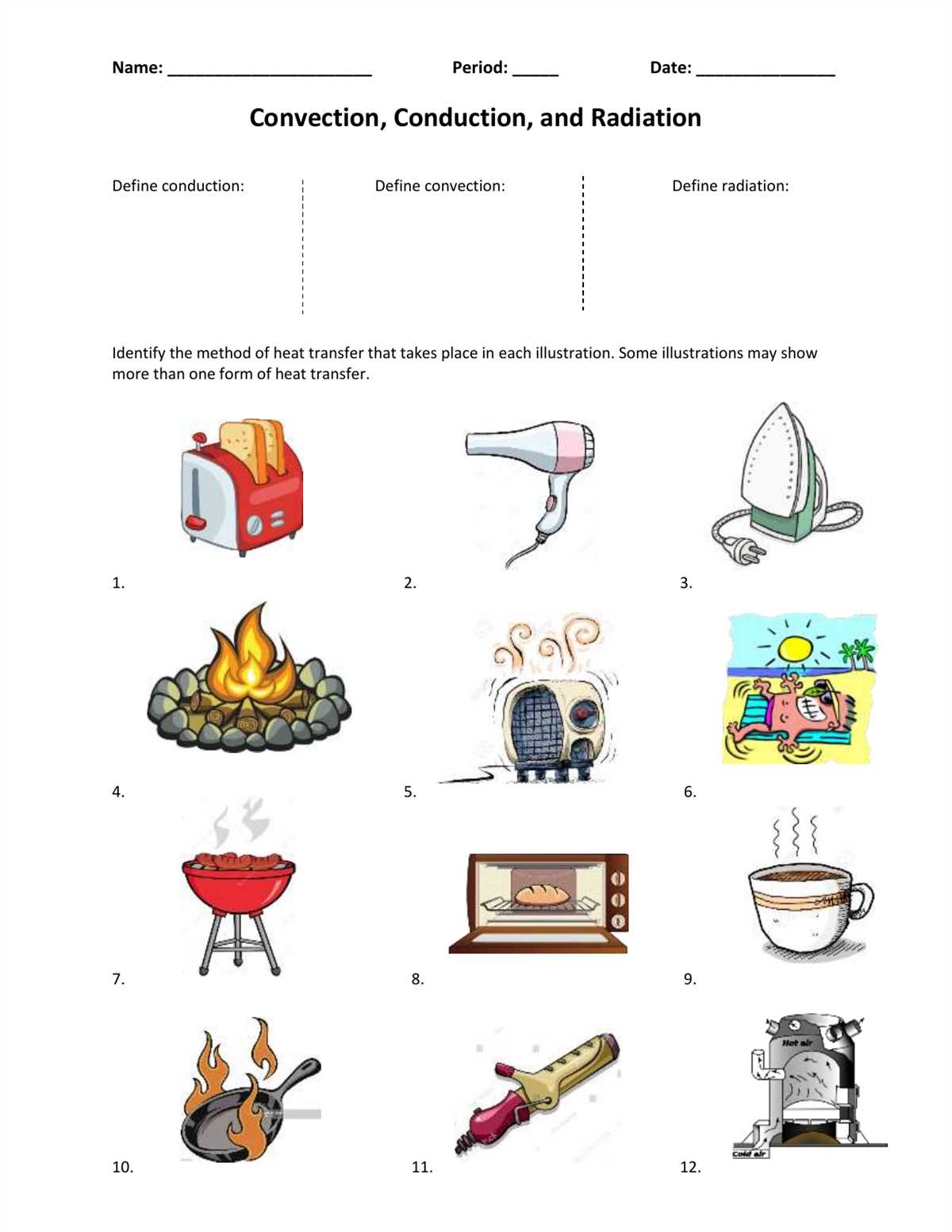
Heat transfer by conduction is the process of transferring heat energy through direct contact between two objects or substances. It occurs when there is a difference in temperature between the two objects, causing heat to flow from the hotter object to the colder one. This type of heat transfer does not involve the movement of mass, but rather the transfer of energy from one molecule to another. Conduction is a fundamental concept in thermodynamics and plays a significant role in various everyday processes.
The rate of heat transfer by conduction is determined by several factors, including the temperature difference between the objects, the thermal conductivity of the materials involved, and the cross-sectional area and thickness of the objects. Materials with high thermal conductivity, such as metals, are efficient conductors of heat, while materials with low thermal conductivity, such as insulators, hinder the flow of heat.
In industrial and engineering applications, heat transfer by conduction is commonly used for heating or cooling processes. It is also essential in understanding the behavior of various materials and designing efficient insulation systems. Additionally, conduction plays a crucial role in the study of heat transfer in solids, such as metals, where the movement of heat occurs primarily through the vibrations and collisions of atoms or electrons.
The Mechanism of Heat Transfer by Conduction
Heat transfer by conduction is the process by which heat energy is transferred through direct contact between particles in a substance. It occurs when molecules with higher kinetic energy collide with molecules with lower kinetic energy, transferring energy from the hotter particles to the cooler particles.
In solids, this transfer of heat occurs primarily through the vibration and collision of atoms or molecules. The vibrating particles transfer energy to neighboring particles through collisions, causing the collective movement of energy from the hotter end of the substance to the colder end.
Conduction can also happen in liquids and gases, though it is less efficient compared to solids due to the greater distance between particles. In these substances, heat is transferred through the movement of free electrons or through molecular diffusion. In liquids, the transfer of heat occurs through the random motion of particles and the transfer of energy from one particle to another through collisions. In gases, heat transfer by conduction is primarily through the diffusion of thermal energy from areas of higher temperature to areas of lower temperature.
Overall, heat transfer by conduction is an important mechanism for the redistribution of thermal energy within a substance. It plays a significant role in various natural and technological processes, such as cooking, heat exchangers, and thermal insulation. Understanding the mechanism of conduction helps engineers and scientists design more efficient systems for heat management.
Factors Affecting the Rate of Heat Transfer by Conduction
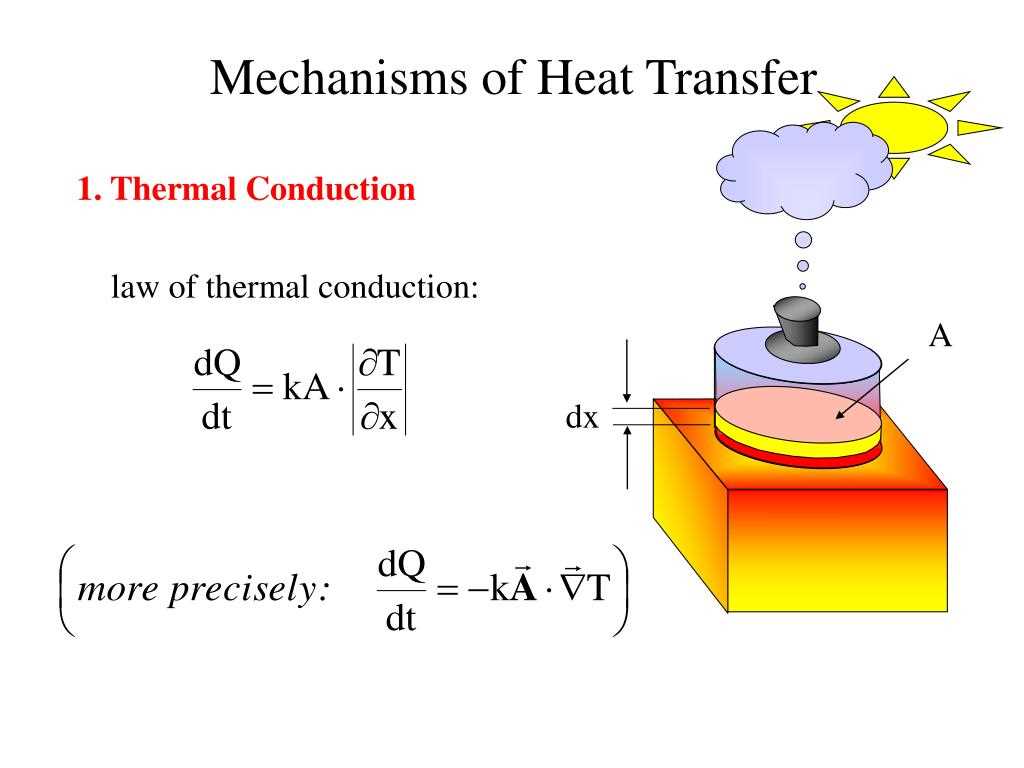
The rate of heat transfer by conduction depends on various factors that influence the movement of thermal energy through a material. These factors include:
- Temperature difference: The greater the temperature difference between two ends of a material, the faster the rate of heat transfer by conduction. This is because a larger temperature gradient allows for a faster exchange of thermal energy.
- Thermal conductivity: The thermal conductivity of a material determines how easily heat can move through it. Materials with higher thermal conductivity, such as metals, have a faster rate of heat transfer by conduction compared to materials with lower thermal conductivity, such as insulators.
- Cross-sectional area: The larger the cross-sectional area of a material, the greater the amount of heat that can transfer through it. A larger cross-sectional area provides more pathways for thermal energy to move, resulting in a higher rate of heat transfer.
- Length of the material: The longer the length of a material, the slower the rate of heat transfer by conduction. This is because a longer distance for thermal energy to travel increases the chances of heat loss through radiation or convection, reducing the overall rate of conduction.
- Type of material: Different materials have different abilities to conduct heat. For example, metals, such as copper or aluminum, have high thermal conductivity and facilitate rapid heat transfer, while materials like wood or plastic have lower thermal conductivity and slower rates of conduction.
- Surface area: The larger the surface area of a material, the higher the rate of heat transfer by conduction. This is because a larger surface area allows for more contact points between the material and its surroundings, facilitating a faster exchange of thermal energy.
These factors can be manipulated to control the rate of heat transfer by conduction, which is important in various applications, such as insulation, heat exchangers, and thermal management systems.
Thermal Conductivity: Understanding the Concept
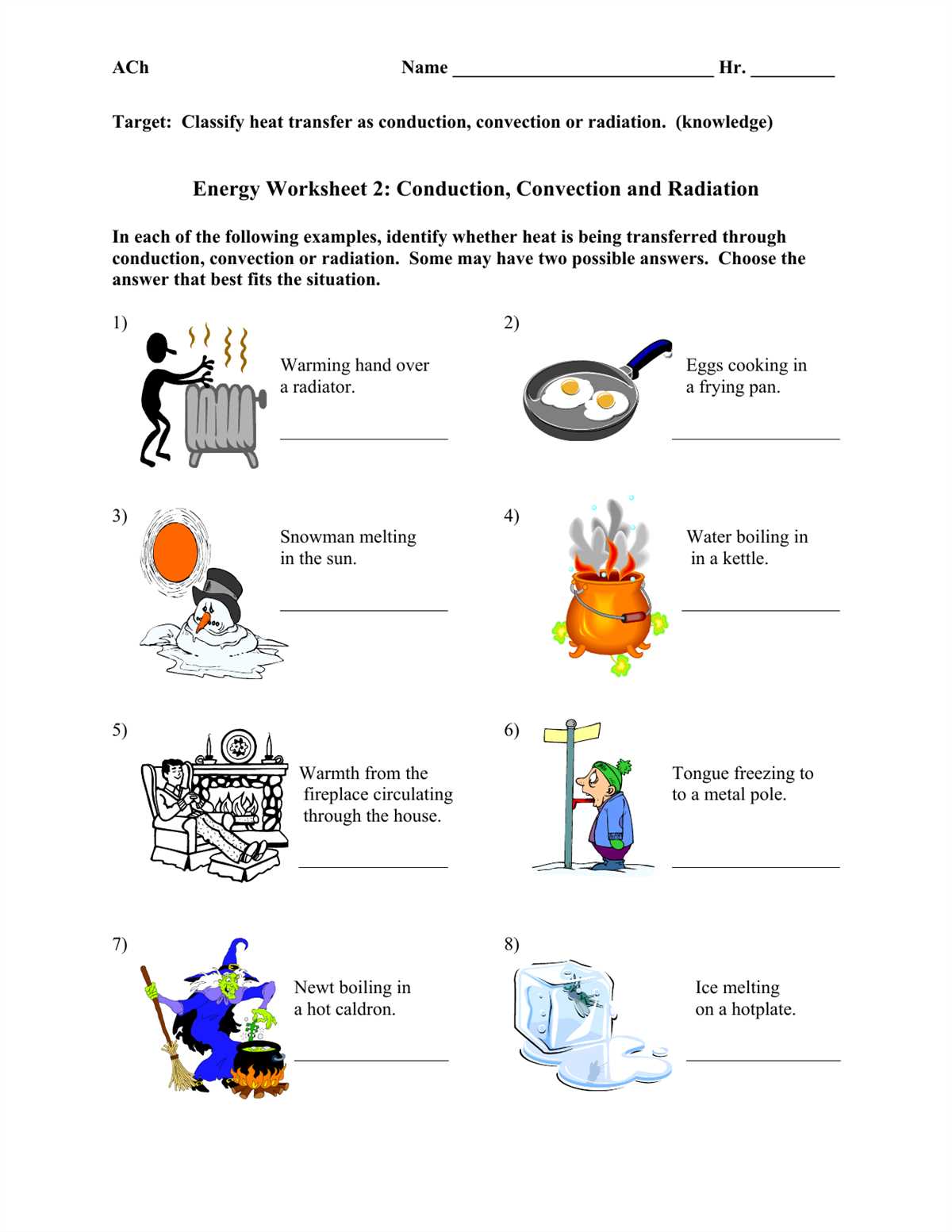
Thermal conductivity is a fundamental concept in heat transfer. It refers to the ability of a material to conduct heat, or in other words, the rate at which heat flows through a material. The thermal conductivity of a material is determined by its physical properties, such as its atomic structure and composition.
Thermal conductivity is typically measured in units of watts per meter-kelvin (W/m·K). It can vary significantly between different materials, with some materials being good conductors of heat and others being poor conductors. For example, metals such as copper and aluminum have high thermal conductivity, making them excellent heat conductors. On the other hand, materials like wood and plastic have low thermal conductivity, making them poor heat conductors.
The concept of thermal conductivity is closely related to the concept of thermal resistance. Thermal resistance is the reciprocal of thermal conductivity and represents the resistance to heat flow through a material. It can be thought of as analogous to electrical resistance, where a higher value indicates a greater resistance to the flow of electricity. In the context of heat transfer, materials with high thermal resistance will impede the flow of heat, while materials with low thermal resistance will allow heat to flow more easily.
Understanding the concept of thermal conductivity is crucial in many fields, including engineering, physics, and materials science. It is essential for designing efficient heat transfer systems, such as heat exchangers and insulation materials. By selecting materials with the appropriate thermal conductivity, engineers can optimize the performance of these systems and improve their energy efficiency.
In summary, thermal conductivity is the measure of a material’s ability to conduct heat. It is an important property that influences heat transfer and plays a significant role in various applications. By understanding the concept of thermal conductivity, we can better comprehend and manipulate heat flow in different materials and systems.
Applications of Heat Transfer by Conduction
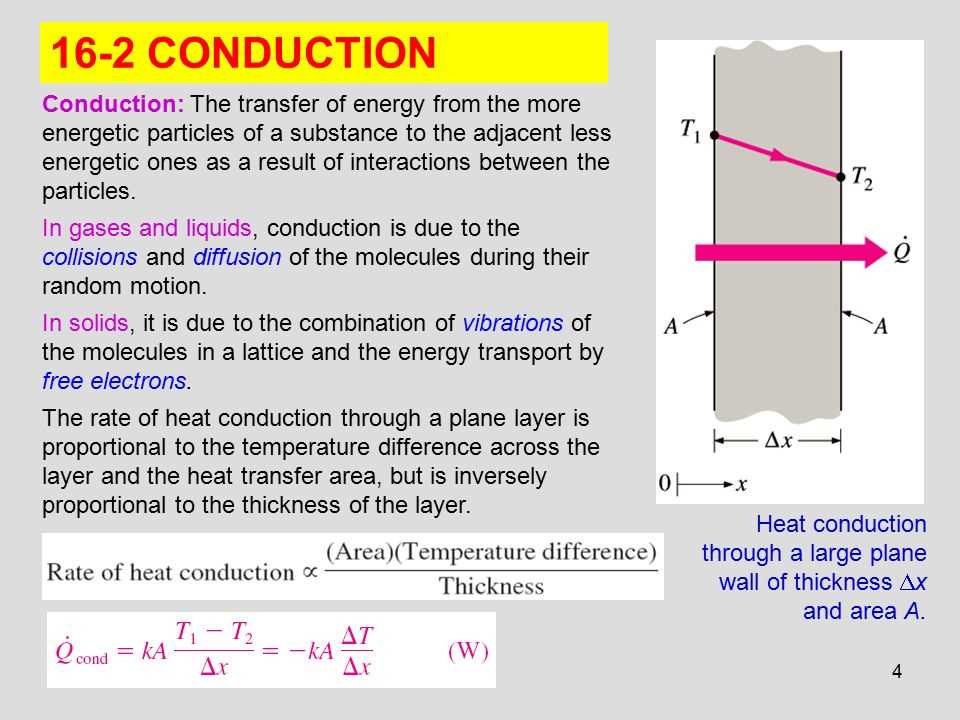
In various industries and everyday life, heat transfer by conduction plays a crucial role in several applications. Here are some of the key areas where conduction is utilized:
- Cooking: Conduction is extensively employed in cooking. When you place a pot on a hot stove, heat is transferred through conduction from the burner to the pot, which then cooks the food inside.
- Heating Systems: Conduction is the principle behind heating systems. In forced-air heating, a furnace heats the air, which then transfers heat to the surrounding objects and people through conduction. Similarly, in radiant heating systems, heat is conducted from hot surfaces to objects and people in the room.
- Thermal Insulation: Understanding conduction helps in designing effective thermal insulation materials. Materials with low thermal conductivity, such as fiberglass and foam, are used to provide insulation and prevent heat transfer by conduction.
- Electronics Cooling: Efficient heat transfer is critical in electronic devices to prevent overheating. Heat sinks, made of materials with high thermal conductivity like aluminum or copper, conduct heat away from electronic components, ensuring their optimal functioning.
- Heat Exchangers: Heat exchangers, commonly used in industrial processes and HVAC systems, rely on conduction for efficient heat transfer between fluids or gases. They are designed to maximize the surface area for heat transfer through conduction.
In conclusion, heat transfer by conduction has various practical applications in cooking, heating systems, thermal insulation, electronics cooling, and heat exchangers. Understanding the principles of conduction allows for the development and improvement of technologies that rely on efficient heat transfer.


